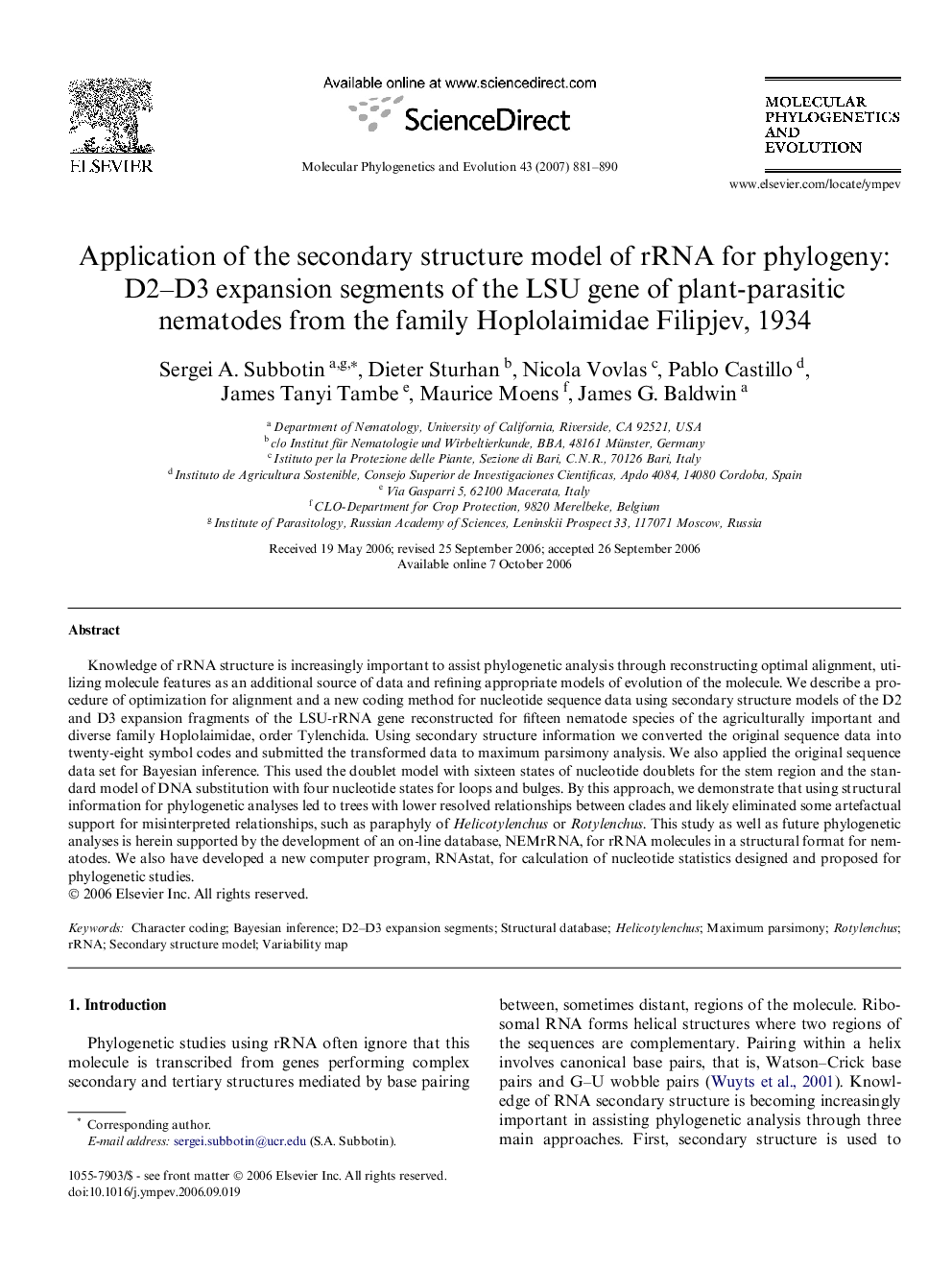| Article ID | Journal | Published Year | Pages | File Type |
|---|---|---|---|---|
| 2835610 | Molecular Phylogenetics and Evolution | 2007 | 10 Pages |
Knowledge of rRNA structure is increasingly important to assist phylogenetic analysis through reconstructing optimal alignment, utilizing molecule features as an additional source of data and refining appropriate models of evolution of the molecule. We describe a procedure of optimization for alignment and a new coding method for nucleotide sequence data using secondary structure models of the D2 and D3 expansion fragments of the LSU-rRNA gene reconstructed for fifteen nematode species of the agriculturally important and diverse family Hoplolaimidae, order Tylenchida. Using secondary structure information we converted the original sequence data into twenty-eight symbol codes and submitted the transformed data to maximum parsimony analysis. We also applied the original sequence data set for Bayesian inference. This used the doublet model with sixteen states of nucleotide doublets for the stem region and the standard model of DNA substitution with four nucleotide states for loops and bulges. By this approach, we demonstrate that using structural information for phylogenetic analyses led to trees with lower resolved relationships between clades and likely eliminated some artefactual support for misinterpreted relationships, such as paraphyly of Helicotylenchus or Rotylenchus. This study as well as future phylogenetic analyses is herein supported by the development of an on-line database, NEMrRNA, for rRNA molecules in a structural format for nematodes. We also have developed a new computer program, RNAstat, for calculation of nucleotide statistics designed and proposed for phylogenetic studies.
